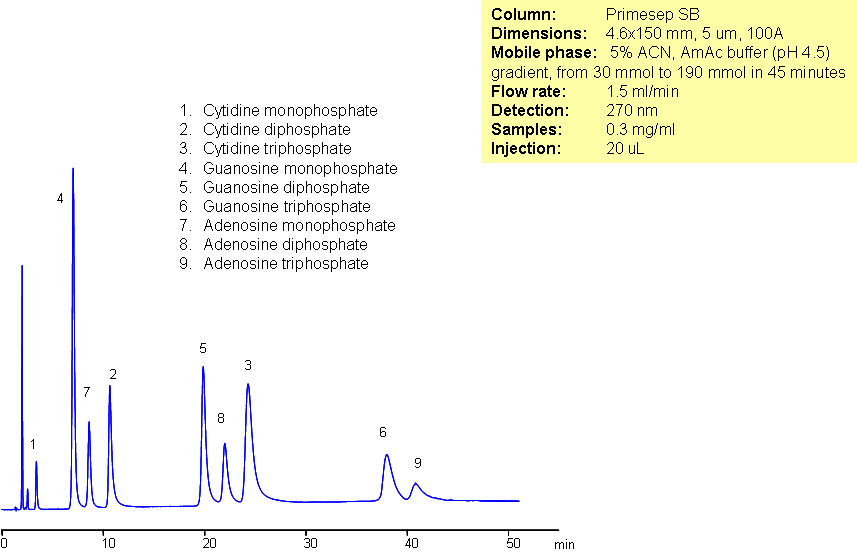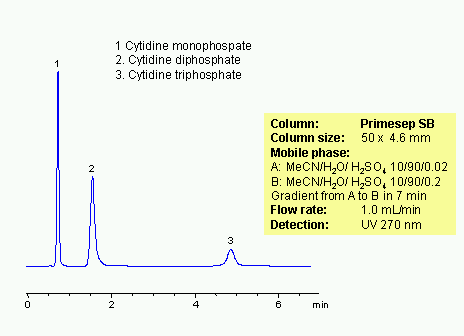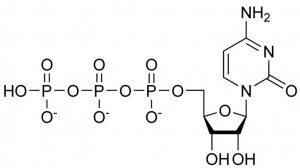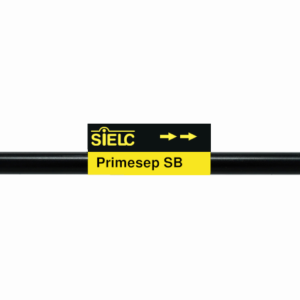| CAS Number | 81012-87-5 |
|---|---|
| Molecular Formula | C9H16N3O14P3 |
| Molecular Weight | 483.155 |
| InChI Key | PCDQPRRSZKQHHS-XVFCMESISA-N |
| LogP | -5.6 |
| Synonyms |
|
Applications:
Separation of Nine Nucleotides by Mixed-Mode Chromatography
July 6, 2015

Nucleotides are important biological molecules which serve as subunits of nucleic acids. They are composed of a five-carbon sugar, a nitrogenous base, and at least one phosphate group. Nucleotides cannot be retained by reverse-phase chromatography without an ion-pairing reagent due to their highly polar nature. Primesep SB is capable of retaining and separating nine nucleotides. Primesep SB is a reverse-phase column with strong embedded basic ion-pairing groups.
Application Column
Primesep SB
The Primesep family of mixed-mode columns offers a wide variety of stationary phases, boasting unprecedented selectivity in the separation of a broad array of chemical compounds across multiple applications. Corresponding Primesep guard columns, available with all stationary phases, do not require holders. SIELC provides a method development service available to all customers. Inquire about our specially-tailored custom LC-phases for specific separations.
Select optionsAdenosine Monophosphate
Adenosine Triphosphate
Cytidine Diphosphate
Cytidine Monophosphate
Cytidine Triphosphate
Guanosine Diphosphate
Guanosine Monophosphate
Guanosine Triphosphate

HPLC Separation of Cytidines
November 21, 2010

Cytidine phosphates are nucleotides. Nucleotides contain a nucleobase, five-carbon sugar and one or three phosphate groups. All three cytidines are very polar and cannot be retained by reversed-phase chromatography without a ion-pairing reagent. Mixed-mode Primesep SB column easily allows to retain and separate mono-, di-, and tri-phospates by anion-exchange mechanism. Other nucleotides can be separated as well by this approach. Nucleotides in biofluids can be analyzed directly on this column without any significant sample preparation. Most of the proteins from biological fluids will be repelled from the surface of silica gel. Method is compatible with UV, ELSD, CAD and LC/MS.
Application Column
Primesep SB
The Primesep family of mixed-mode columns offers a wide variety of stationary phases, boasting unprecedented selectivity in the separation of a broad array of chemical compounds across multiple applications. Corresponding Primesep guard columns, available with all stationary phases, do not require holders. SIELC provides a method development service available to all customers. Inquire about our specially-tailored custom LC-phases for specific separations.
Select optionsCytidine Monophosphate
Cytidine Triphosphate



